March 12, 2025
How to Set up a PTO Tracker in Google Sheets (2025 Template)
A Google Sheets PTO tracker is a simple, inexpensive way to track annual leave, sick leave and other absences...
Managing and tracking paid time off is a vital part of running a business. But it’s also a big, tedious time-sink. PTO tracking software makes it so much easier to track paid time offs.
These software solutions automate all the menial data entry and ensure greater accuracy, helping you build a streamlined, more efficient PTO tracking process.
There are many software tools out there, but not all are equal. You’ll find some tools are better suited for your business than others. Read on, and we’ll help you find the right PTO tracking software for your team.
Paid Time Off management software helps you save time spend managing PTO requests, reduce interruptions when team members take time off, and create a positive company culture.
Let’s expand on this.
Your time off tracking process is more organized and streamlined with a PTO tracking software, which saves a ton of time for HR managers or small business owners.
You can automate the leave request and approval process, along with the process of gathering and organizing leave requests in one place. This doesn’t seem like much, but when you can do all these things in one click, it adds up.
The best part of this is that the person managing this (HR managers, department managers, team leaders) are usually among a company’s higher-paid staff. That means the time you save on leave management tasks also saves you a ton of money.
Every team member needs paid time off, whether it’s sick leave, vacation days, personal days, or any other types of leave. PTO tracking software helps you make sure that days off cause minimal disruption to productivity.
Paid time off tracking software ensures everyone’s in the loop when someone takes time off, by maintaining a clear and easy-to-follow vacation calendar, as well as providing automated notifications for upcoming absences, as well as syncing with your key scheduling/communication tools.
By making it an easy, stress-free process to request time off, you incentivize employees to take time off when they need it.
This is extremely beneficial for the long-term health of your employees, and your team in general. It helps reduce the risk of burnout, increase employee engagement, and increase employee retention.
Long-term, these employees who are able to take regular vacations, or take sick time when they need it, are more productive than those who power through for months on end without taking a break.
All this starts with an efficient, streamlined PTO tracking process.
Further Reading: 5 Reasons to Use Absence Management Software
Anyone can do a quick search and give you a generic list of the best PTO tracking software. But when choosing the right PTO tool, consider the unique needs of your business.
Small, medium and large businesses have different needs. So do remote and in-person teams, teams with hourly or salaried employees, and those with different leave policies.
You wouldn’t expect a McDonalds franchise, an accounting firm and a bootstrapped software startup to run their leave management processes the same way.
Here are some things to consider when choosing the best PTO tracking software for your business:
There are some things that all businesses should want – something that’s clear and easy to use, integrates with their existing workflow, and is flexible enough to suit their needs.
But other features make certain tools more or less suitable for different teams. To help you make an informed decision, we’ve broken down the following list into a few different categories, for teams at varying scales and stages.
The first category looks at the best way to track time off for agile, often remote, small to medium-sized teams, particularly those that use Slack. These teams need a flexible, lightweight tool that fits into their workflow and makes the most of the limited time and resources they have available.
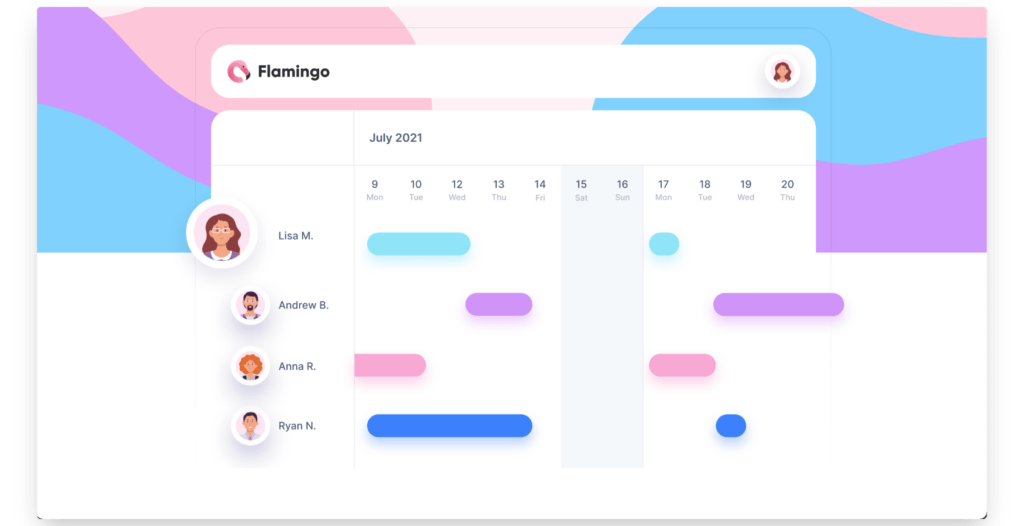
Flamingo is the best PTO tracking software for Slack-based SMBs, agile teams, remote or hybrid teams.
These businesses need to keep it simple, and Flamingo does that. It’s designed to save time for both employees and HR managers with a streamlined leave request and approval workflow.
Employees request time off through Slack, with a simple time off request form. The request gets sent to the appropriate manager, who can approve or deny the request in just one click.
The process is incredibly efficient, with much less friction than traditional time off request workflows, which usually require manual back-and-forths between employee and manager.
There are a few other key features that make Flamingo worth using.
One is how easy Flamingo makes it to notify staff and manage the schedule around planned absences. You can see all upcoming and pending leaves in a clean and attractive vacation calendar, as such:

It also has customizable daily/weekly Slack notifications with a summary of upcoming leaves and public/federal holidays, and the ability to sync the team’s leave schedule with calendar apps such as Google Calendar, Outlook and Apple Calendar.
The ease with which you can do everything in Slack is another plus. Employees don’t need to leave the platform for anything leave-related. The app is a convenient hub for everything, including the employee’s PTO balance, their upcoming and past leaves, and scheduled leaves and team-wide holidays.
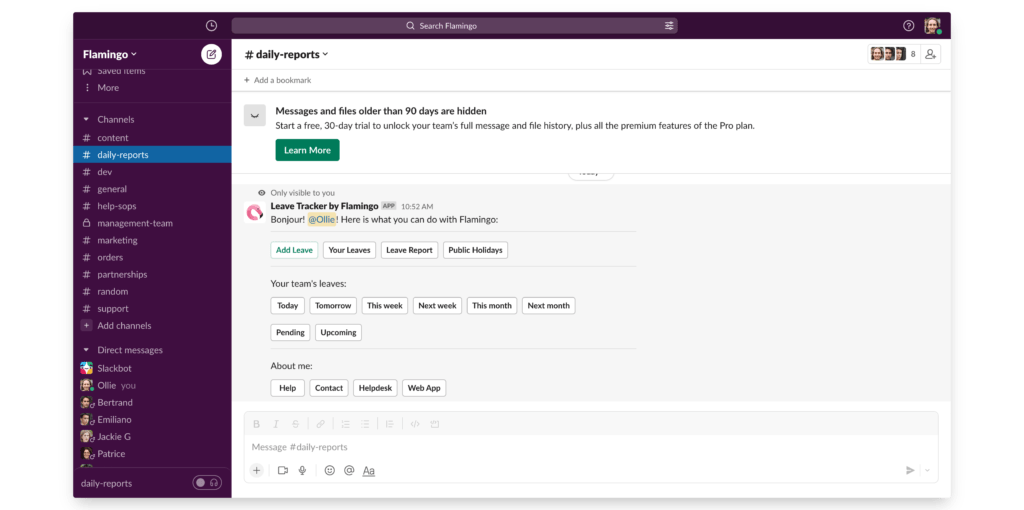
And the third key value point of Flamingo is how customizable it is. You can create multiple teams (e.g. different departments or projects within your business), as well as multiple locations, for remote teams with members in different countries.
You can add or customize leave types and allowances for each team or individual, or remove limits completely (for teams with an unlimited PTO policy). It gives you complete control of how you want to set up your leave policy.
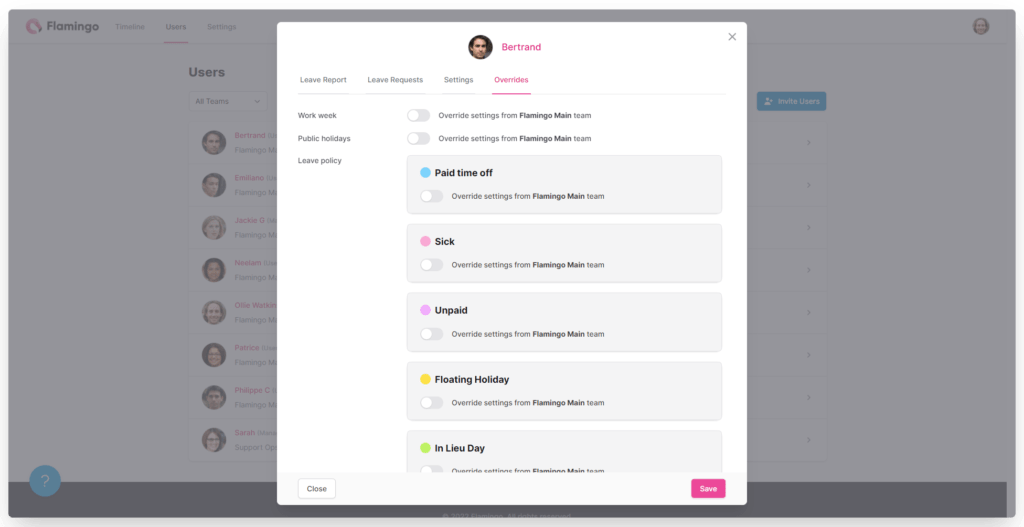
Alongside efficient reporting tools, CSV export of leave data, and best-in-class support, Flamingo ticks all the boxes.
Flamingo makes your life easier, not harder, which is exactly what you want from a PTO tool.
Now we’ll look at the best tools to use if you also need attendance tracking or time tracking software alongside PTO tracking features. This applies for teams with hourly employees, casual/freelance staff, or any others for whom overtime, lateness or attendance is an issue.
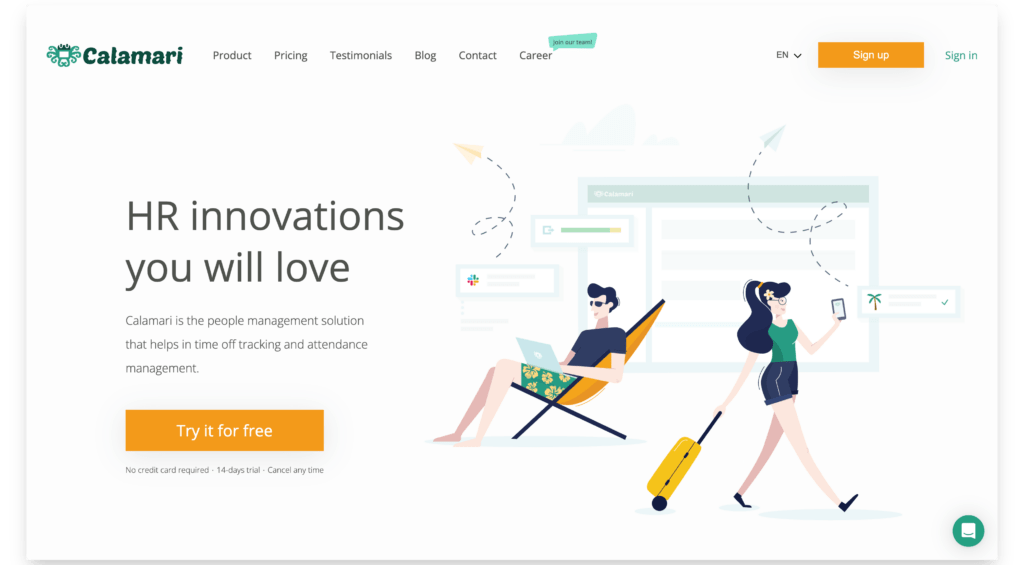
Calamari is a simple, easy-to-use solution for both attendance management and time off tracking software.
Clocking in and out is easy, with a mobile app and QR codes (a convenient feature for in-person teams). It works for worktime, breaks, billable and nonbillable hours.
Then there’s a separate module that allows you to manage time off requests and other employee absences.
Calamari also integrates with Slack, MS Teams, Asana, Google Workspace and several other tools popular with remote and agile teams. At $4.5 per employee per month (for both leave management and time management/attendance tracking modules), it’s a fairly affordable and effective solution.

Clockify is another option if you need time tracking, shift scheduling and PTO tracking in one tool.
It’s a bit more complex than Calamari, offering more in-depth features for time tracking, timesheets, scheduling, along with project, expense and invoice tracking.
This does make it more complicated and harder to use. Yet it’s better at integrating timesheets and time off tracking, as you don’t need separate modules for these tasks.
How to choose between these two tools?
As PTO software, Calamari is best, as it provides a simpler and cleaner module to manage employee’s paid time off requests. Clockify is much more in-depth in terms of time tracking. Consider whether or not you need this – if not, you’ll be better off with the simplicity of Calamari.
Trending Post: How Much PTO is Average in the US and Around the World?
The next category are tools that fit large businesses. These businesses may need a full-stack HR tool, that integrates paid time off management with other HR tasks, including compliance, performance management and payroll.
The downside with these tools is that they’re expensive and complicated, so if you’re running a smaller team, the extra investment in time and money to set your team up with one of these tools doesn’t make as much sense.
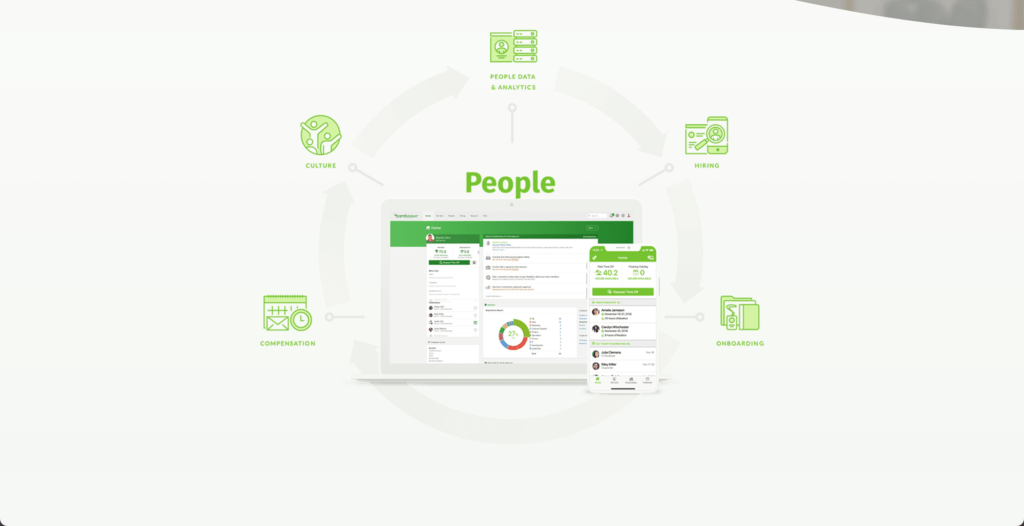
BambooHR is a popular full-stack HR management tool, offering many more features than just PTO tracking and time off management.
Though it’s somewhat expensive and complex, it’s a good fit if you have higher-end needs.
BambooHR also helps you manage the hiring and onboarding processes, compensation (which includes PTO tracking features), and company culture/performance management.

GoCois a similar option, also coming highly recommended by HR professionals. It, too, allows you to handle your whole HR workflow with one software tool, from applicant tracking, hiring and onboarding to payroll to benefits management.
For small to medium businesses, these tools are overkill, with a lot more features and complexity than is necessary. The price is also prohibitive for growing startups.
However, if you’re at the stage where you have a dedicated HR department, and compliance has become a priority, you might want to look at a full-stack HR/PTO software like those above.
Finally, let’s look at what to use to track time off and manage leave requests if you’re in charge of a very small team, such as a pre-revenue startup.
Saving money may be more of a concern for you, and you may not feel it’s worth it to sign up for a dedicated leave management software.
A Google Sheets PTO tracker is not the worst place to start.
It’s free, which is obviously a big plus. It’s also quite flexible. Even though it might take some time to set up your PTO tracker the way you want, there’s no much to restrict you.
You can set up a simple spreadsheet, with separate sheets for each month, the days of the week marked in each sheet. Add PTO requests to the spreadsheet when they’re approved, and you’ve got a simple, DIY leave tracker.
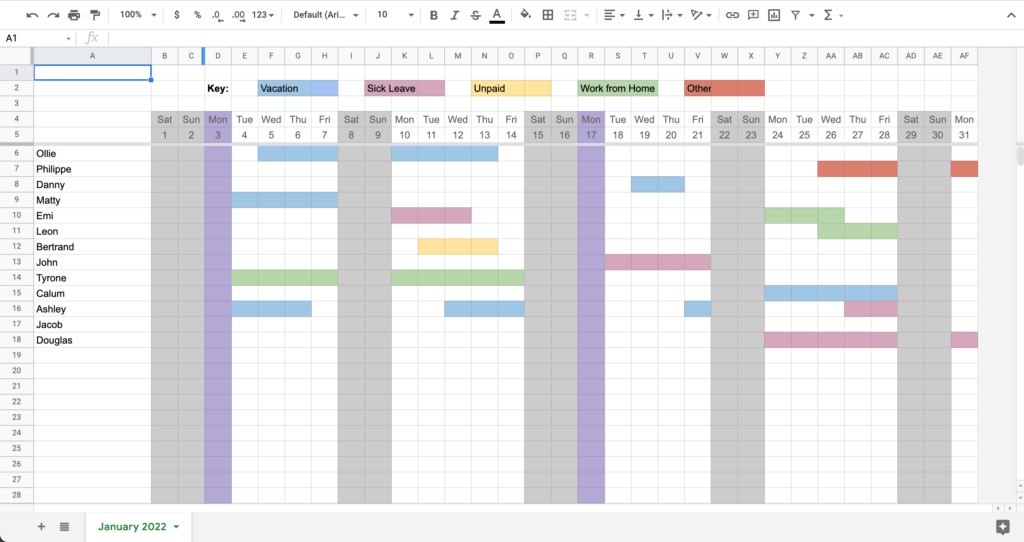
It’s easy to customize sharing permissions so that certain people (i.e. managers) can edit it, and the rest of your team can access it in view-only state, so everyone knows when someone is due to be away.
(You can level up your DIY PTO tracker further by color-coding for different leave types, and keeping a running track of each employee’s PTO balance each month).
The downside is that it doesn’t scale. It gets much more time-consuming as your team grows, as all the things an automated system does need to be done manually.
Want to use Excel/Google Sheets to track PTO in your business? Click below to get a free PTO tracker spreadsheet template for 2024, and start keeping track of your team’s time off.
Flamingo also suits small, pre-revenue businesses. It provides an affordable solution that allows your team to stay organized without the burden of high costs, making it easier to focus on growing your business.
Unlike Google Sheets, though, Flamingo scales. As your team grows, Flamingo provides more value, saving you more time – especially when you need to start curating historical data and generating reports, which will be very time-consuming if you go through this data manually.
There’s very little (if any) downside to using Flamingo as a small team, but exponential upside.
Build an efficient paid time off management system, with the right employee time tracking tool, and your business will run smoother, you’ll save time and energy on HR, and your employees will be happier and more productive.
Modern businesses automate what they can to get ahead. Paid time off management is one of the easiest things to automate in your business. Don’t get left behind with an outdated, over-complicated PTO tracking system.
Check out the tools mentioned above, and choose the right software tool for your business.
Flamingo® makes managing your team’s paid time off a breeze.